Kadaknath chicken breed is native to India and found in Madhya Pradesh. It is also known as Kali Masi. This breed is known for the good taste of its meat production. It has black legs, black toenails, a black comb, a black beak, and black flesh and bones. It has light brown eggs. The price of Kadaknath eggs in the market is much higher than normal eggs.
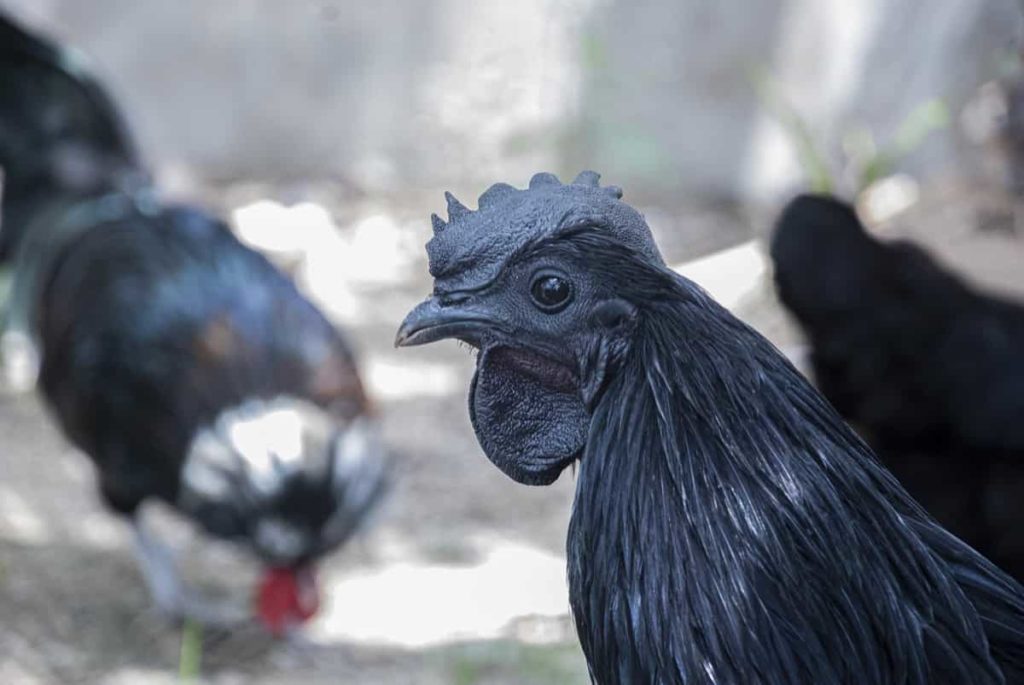
The demand for Kadaknath chicken is much higher than normal chickens in India, so the profitability of Kadaknath chicken farming is very important. Kadaknath can easily sell chicken and eggs in the market at high prices. To start Kadaknath chicken farming or the Kadaknath egg production business, you need to follow the steps below, including poultry farm construction and dimensions and bird feed information.
Raising Kadaknath chickens (Black Chickens) in India
What is Kadaknath?
- Kadaknath is a dark-colored chicken (chicken) also known as Kali Masi. The origin of the bird is found in the Jhabua district of the Indian state of Madhya Pradesh. Its flesh is textured and flavorful. Species adapt to any environment.
- Poultry house cleaning starts with a clean house that is well-prepared before the arrival of the baby chickens. Each house must be vacated after at least two weeks, disinfected, and smoke-free. The effectiveness of home disinfection depends on the extent of cleaning before the application of the disinfectant.
This sanitation helps control disease because,
- It reduces the number of pathogenic organisms.
- Remove material that helps pathogens multiply.
- Expose surface to disinfectant and fumigants.
How many days will it take to grow Kadaknath chicken?
Kadaknath Chicken (Black Chicken) grows well in about 107 to 115 days. Due to its increasing demand, this popular breed has started farming in Andhra Pradesh, Kerala, Telangana, and Tamil Nadu. Weight for the breed ranges between 50 grams to 1.75 kg and takes about 107 to 115 days.
Is Kadaknath chicken farming profitable?
A Kadaknath can give you around 100 to 110 eggs in its lifetime, and the selling price per egg is around Rs. 40-50. So if you sell eggs, you can probably earn 2500-4000, and chicken costs around 700 per kg, so on average, you can get 1200 to 1500 per chicken.
Kadaknath chicken has;
- Better market value – Due to rarity and increasing demand in the market, black chicken is currently priced much higher than other varieties.
- Suitable for Indian climate – Kadaknath is a native species of India and is suitable for an extreme climate like India.
- Few or no antibiotics are needed – Since this breed has high immunity and resistance against common local diseases, the use of antibiotics is less or less. Hence, this meat is a healthy recipe for broiler chicken lovers.
- Low maintenance – The breed does not require a special poultry structure and other maintenance for its growth. They can be raised in a backyard space with common kitchen food.
How do you identify Kadaknath Chicken?
Kadaknath chicken has black meat and brown eggs. Selection of labor is an important task in poultry farming. Divide their roles and give the main responsibility of feeding the chickens to the experienced workers while cleaning and maintaining the farm is given to the unskilled workers. However, both tasks are important, but Kadaknath feeding takes place at a sufficient time in the day. It also requires good calculation of adequate feeding, and experienced laborers can do better than less experienced laborers because they are aware of hunger.
In case you missed it: Earning More than 3 Lakh Per Month: A Success Story of Kadaknath Chicken Farmer
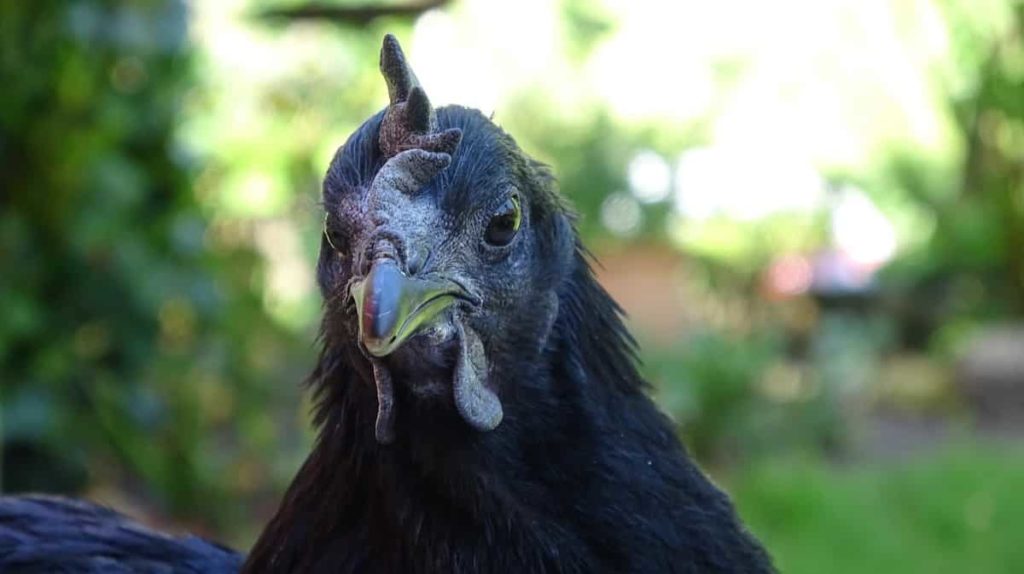
How many eggs does Kadaknath give?
Kadaknath mainly produces an average of 80 eggs per year. The average weight of a Kadaknath egg is 46.8 grams. It is an Indian breed of Kadaknath chicken, completely black and native to Madhya Pradesh. Kadaknath eggs are a rare variety of eggs rich in protein and have higher nutritional value than normal eggs.
What is the color of Kadaknath eggs?
The eggs of Kadaknath chickens are brown with a light pink tint. This is because they are poor and rarely have children. Unlike normal poultry chicken, Kadaknath chicken, also known as a black chicken, is entirely black. From flesh to blood, nerves to feathers, and even the eggs of this chicken are black.
How do you farm Kadaknath chicken?
For the best growth and profitability of Kadaknath, Kadaknath housing should have a room temperature of 20° to 26°C and humidity of 50% to 70%. Birds can survive well in temperatures between 16° to 35°C.
Kadaknath chickens are kept or reared in a litter system or cages.
Kadaknath poultry farm site selection: You should choose an open space for your chickens. So it would help if you had a place to rent according to your pocket. Choosing a place outside the city is advisable to reduce the rental rate. For the breeding of Kadaknath chicken, wooden boxes need to be made. Apart from this, it would help if you also prepared the feeder box.
The right bird: Make sure you have the right bird! As stated earlier, there have been many hoaxes and scams. Remember that Kadaknath chickens are hard to come by, especially outside your home country. It is unlikely that small farmers will be able to catch up with these people—double or triple-check your sources.
Egg production: These aren’t the best layers around, so if you ever want to take care of these birds and hatch some baby chickens, you’ll have to help them out. Make sure you give them vegetables to help support the health of the unborn baby chickens. Don’t forget to give them calcium to help the eggshells.
Help them adjust: If you ever get to take one of these birds home, make sure you help them adjust to your coop. Chances are, they were in a very different environment before. It may be the only time they need some extra help.
Why are Kadaknath eggs costly?
The higher price is due to the longer time it takes to raise the chicken. While a broiler grows up to 2.5 kg in 45 days, black takes six months to reach 1.5 kg. Moreover, the egg fertility rate is very low. Being a rare breed, this chicken is expensive for many reasons. Because of the low fertility rate, they take time to grow, so the price is high.
Since black chicken is the best source of protein, it is in high demand but not easily available in the market. You can pair it with any Indian roti or steamed bowl of rice, grill it with spices, or make delicious kebabs. The Kadaknath is one of the three black chicken breeds found worldwide.
How is Kadaknath different from other chickens?
Kadaknath chicken, apart from being very healthy, especially in winter, is a mature chicken. It is very tender, and its flavor and texture are pretty subtle compared to white chicken. The only difference is that the meat of Kadaknath is tougher and stretchy.
Why is Kadaknath’s blood black?
The Kadaknath breed has about 10 times more iron than the normal chicken breed. The main reason for the dark color of his skin and even the color of his blood is the high iron content. The eggs of this breed of hens are also quite famous.
Why Kadaknath is expensive?
The higher price is due to the longer time it takes to raise the chicken. While a broiler grows up to 2.5 kg in 45 days, a black one takes six months to reach 1.5 kg.
In case you missed it: Kadaknath Egg Production, Egg Price, Health Benefits
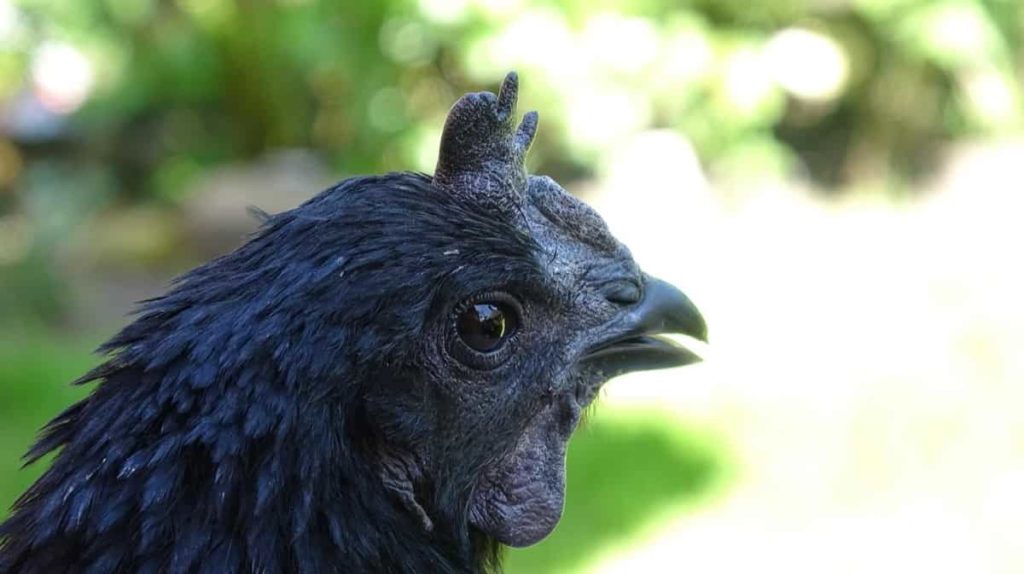
Productivity of Kadaknath Birds
- Kadaknath starts laying eggs at six months,
- Kadaknath eggs are laid in two to three clutches a year,
- About 25 to 30 eggs per clutch and 80 to 90 eggs are produced annually.
- Chickens of this breed show poor breeding ability; hence, the eggs are kept under indigenous chickens to rear the traditional tribal practices in the area. Bamboo baskets are lined with paddy/wheat or dry grass crop residues to provide a cushion for hatching.
- Desi and Kadaknath bird eggs are placed on this cushion so that a birdie will raise a desi hen. This traditional technique is being encouraged by PFT to propagate Kadaknath through natural means and ensure the availability of Kadaknath baby chickens in villages.
What is the price of Kadaknath in India?
- Birds currently go for Rs. 2,000 to 2,500 per piece, and you will have to pay Rs 50 per egg.
- The price of black chicken meat is 700 to 1000 rupees per kg.
- Kadaknath chicken is priced high in the overall meat market.
- The price of Kadaknath chicken is determined by the weight and age of the Kadaknath. Therefore, checking the weight and age of Kadaknath chicken before buying it is advisable.
- If you want a good profit in this business, you should buy healthy Kadaknath chicken.
How to start a Kadaknath poultry farm?
- Get a good breed of Kadaknath birds from quality government and private poultry farms.
- Make sure you bring children up to date with the appropriate vaccines.
- Start farming with about 30 to 50 Kadaknath birds and keep increasing the number of birds as you gain experience.
- Get information on baby chickens and feed from the agricultural university poultry department and veterinary universities.
- Some state government is incentivizing the breeding of these birds, taking advantage of these benefits.
- For two weeks, the birds need proper care and provide the necessary shelter/light/water/food. Don’t start a large scale without knowing the poultry line of business. If you are beginning commercial Kadaknath chicken farming, ensure you have established a proper marketing channel.
Is Kadaknath Chicken Halal?
Kadaknath chicken breed is the rarest poultry breed of India, native to the Jhabua district of Madhya Pradesh (MP), India. The Kadaknath breed is famous for its dark meat and is known as BMC (Black Meat Chicken).
In case you missed it: Kadaknath Farming Guide, Loan, Subsidy, Contract Farming
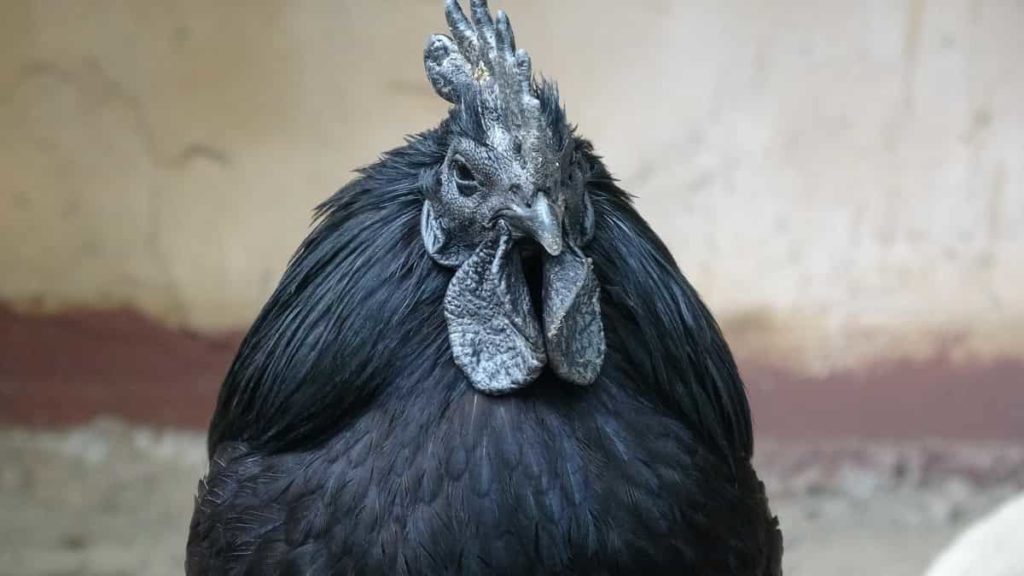
How to start Kadaknath chicken farming?
Poultry farm construction and dimensions
- The Shade center can be 9 to 16 feet long.
- The sides should be 9 to 11 feet high.
- In this case, the height of the cage can range from 10 to 16 feet.
- Using cement concrete as flooring can reduce diseases.
- It also helps in easy maintenance and cleaning.
- While straw, coconut, and palm leaves can be used to make poultry roofs.
- Choose a shady place that is free from mosquitoes and flies.
- Have some cardboard that is 15 inches high and 6 feet in diameter.
- These cardboard should be placed so baby chickens can easily stay inside.
- The brooding area should be free from rodents and other creatures so the baby chickens can survive easily.
- Check the proper spacing for moving baby chickens in brooding houses, and there should be 6 to 8 inches of free space for 1 to 10-day-old baby chickens.
How to check the health of the Kadaknath chickens?
- A healthy chicken bird is active and loves to eat and jump, so if the Kadaknath chickens you buy do not have these qualities, avoid buying them. Another thing to look for in a healthy chicken is its voice and the quality of its voice.
- Chickens that chew their food very quickly are considered healthy. Conversely, chickens with very low vocalizations can be classified as unhealthy chickens. Also, chickens that do not move well with other chickens are considered unhealthy.
- Chicken health should not be taken lightly. An unhealthy chicken can also be harmful to your customer’s health. It would help if you always strived to provide the highest quality chicken to your customers.
Where is the Kadaknath Chicken mostly found?
Kadaknath, also known as Kali Masi (“black-fleshed fowl”), is an Indian breed of chicken. They originated from Dhar and Jhabua in Madhya Pradesh. Rural and tribal people mostly rear these birds. Kadaknath chickens are reared mainly by tribal communities in Bhil and Bhilala in the Jhabua and Dhar districts of Madhya Pradesh (MP). Kadaknath chicken farming on a commercial scale, especially in the states of Kerala, Andhra Pradesh, Telangana, and Tamil Nadu. Kadaknath chicken has black meat and brown eggs.
What is special about Kadaknath Chicken?
Kadaknath is famous for its adaptability and grey-black meat believed to infuse vigor. Its color is due to melanin. It originated from the forests of Kathiwar Alirajpur in the Jhabua district of Madhya Pradesh.
In case you missed it: Kadaknath Chicken Farming Project Report
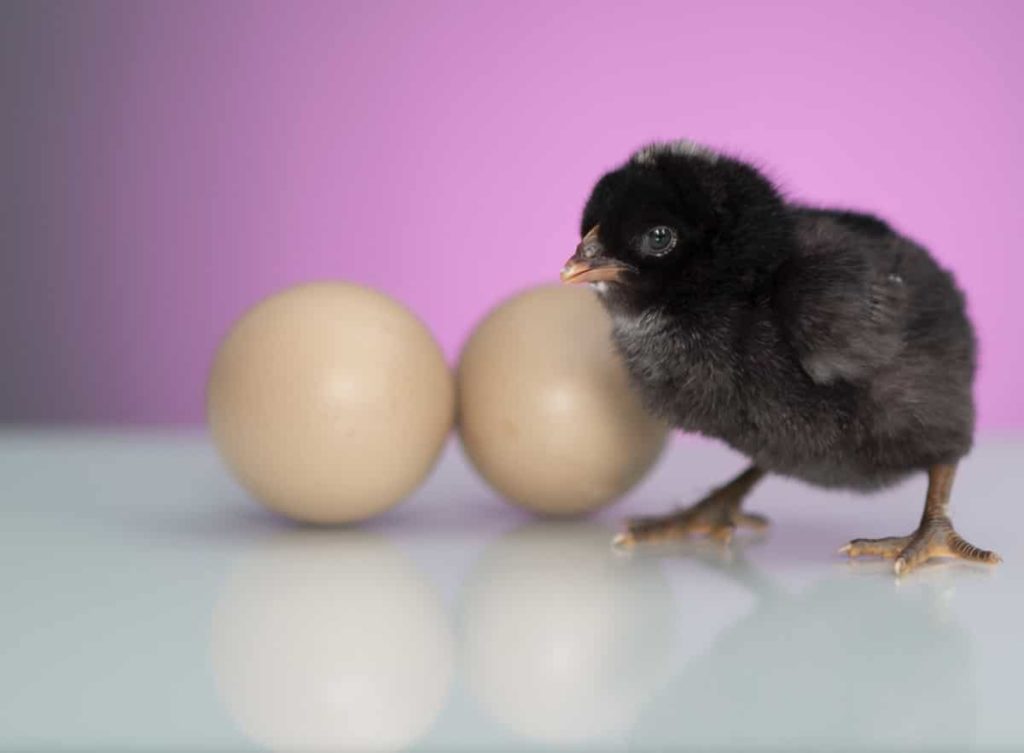
How to start a Kadaknath farming business?
To start a Kadaknath Chicken Farming business, you should know about complete details of starting Kadaknath Poultry Farming;
- Before starting a business, you must grab a good marketer and identify a new audience; you must find customers at your location. After that, you can hire a marketing team for promotion.
- Firstly you register your business as a company or a proprietorship. And you are the identity of the company.
- Assets – You must have land for poultry farming and need at least 800 square feet to expand the business in the future.
- Apart from the land, you need a proper structure for the feeding room, poultry shed, and other equipment for Kadaknath Poultry Farming.
- Need a lot of money, you can apply for a Mudra Loan for investment.
Even if it is a small farm or a large farming business, a proper chicken farming business plan should be developed and include feeding, housing, maintenance, labor, investment, and marketing strategies. Should. By having a sound business plan, you can start commercial breeding these birds.
Shelter and maintenance: Suitable land for chicken farming is selected to maximize chicken growth and egg development. The shelter should be some height from the road so that rainwater can easily drain out and be protected from flooding. A supply of fresh water is essential. It should have 24 hours power supply.
Chicken shelters should be away from industrial and urban areas as chicken manure pollutes the environment and creates a bee nuisance. Choose a shelter free from noise as the noise problem will affect the production of the birds. The smoke from the factories will also affect the birds. The blackbird Kadaknath can easily survive in hot conditions and is capable of surviving in temperatures ranging from 12°C to 42°C. They can grow easily in difficult conditions, including poor housing, feeding, and management.
Thus, they provide better business opportunities because there is very little competition in India’s cultivation of this particular species. The Kadaknath blackbird is mainly known for its dark meat flavor and large brown eggs. Furthermore, the fat content of Kadaknath chicken is much higher than that of normal chickens; Kadaknath has a fat content of 0.70% to 1.05%, while the fat content of normal chicken ranges from 12 to 26%.
Which vaccine is best for Kadaknath chicken?
Recommended Vaccines: They also need up-to-date vaccines for good growth. Following are some important vaccines or drugs to maintain good chicken health:
- When the baby chicken is one day old, give HVT vaccination to protect against Marek’s disease. The injection effect will last for 18 months.
- Administer RD vaccination (F1 strain) when baby chickens are 4-7 days old to protect them from distemper. The effect of this injection will last for 2-4 months.
- When the baby chicken is 18-21 days old, give the IBD vaccination to protect against Gumboro disease.
- When baby chickens are 4-5 weeks old, give them RD (F1 strain) vaccination to protect against Ranikhet disease.
- Give the RD (F2B strain) vaccination to protect the baby chickens against Ranikhet disease when they are 6-8 weeks old. 0.5 ml of the drug is administered to the baby chicken.
- When the baby chickens are 8-10 weeks old, give them a vaccine to protect them from chicken pox.
Chicken vaccination is essential in poultry farming as it can affect your business badly, so it is important to vaccinate your chickens from time to time. If any chickens are infected with any virus, immediately move the chicken from the poultry farm to another place and start treatment from the nearest veterinarian. Remember that one infected chicken can spread the disease to all the other chickens, so don’t hesitate to vaccinate your chickens periodically or as needed.
In case you missed it: Kadaknath Chicken Breed information
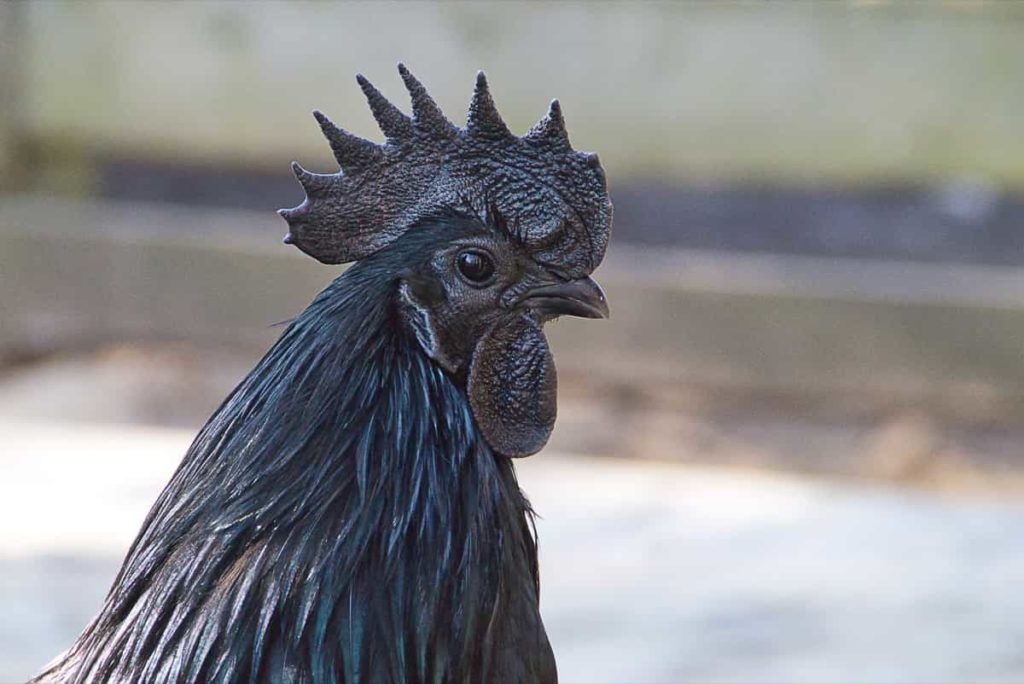
What should I feed my Kadaknath chicken?
Before 2 months, birds can be fed pre-starter broiler feed corn flakes. After 2 months, they can be given a 20% protein diet. Based on weight and age, you can start with broiler feed and then with regular feed. This species requires minimal maintenance and can eat seeds, grass, leafy greens, etc.
Protein: Starter, i.e., 0-10 week-old babies should have a protein level of 10-20% in their diet. High levels of protein help to boost the growth of baby chickens. The grower’s feed and layers should have a protein level of 15-16%. Their diet should have a protein level of 16%.
Water: For the starter, i.e., 1/4 cup sugar and 1 teaspoon of Terramycin/gallon in the water and 1 teaspoon of Terramycin in the second water and then normal water. Give one quart of water to every four chickens. The water should be fresh and clean.
What is feed for black chicken?
Chickens scavenge for food such as earthworms, insects, and slugs. You may even see a rooster catch a mouse to feed baby chickens. However, most poultry also like to eat the tips and seeds of the following growing grasses and weeds.
Carbohydrates – Carbohydrates are essential for maintaining body temperature and burning body fat. For this, they need energy which will come from carbohydrates. Please do not limit the number of carbohydrates in their diet to more than 10%, as they are difficult to digest.
Mineral content – Mineral content is used to build bones and eggs and for other body functions. Mineral content includes calcium, magnesium, sodium, potassium, phosphorus, chlorine, sulfur, manganese, iron, copper, iodine, zinc, cobalt, and selenium. All these materials are obtained from feed.
Conclusion
Kadaknath chicken is gaining popularity day by day due to the health benefits associated with its meat. Kadaknath is one of the superior local breeds of black chicken adapted to extreme climates. Kadaknath chicken has many health benefits and is a better alternative to today’s marketed chicken breeds.
It is known for its meat’s quality, texture, and taste. In addition, these birds are of great medical importance in homeopathy and useful in treating certain nervous disorders. If you are thinking about starting a Kadaknath poultry farm business, you must follow this information for a successful business.
- How to Make Houseplants Bushy: Effective Tips and Ideas
- Innovative Strategies for Boosting Coconut Pollination and Yield
- Pollination Strategies for Maximum Pumpkin Yield
- The Complete Guide to Chicken Fattening: Strategies for Maximum Growth
- Natural Solutions for Tulip Problems: 100% Effective Remedies for Leaf and Bulb-Related Issues
- Revolutionizing Citrus Preservation: Towards a Healthier, Greener Future
- Natural Solutions for Peony Leaf and Flower Problems: 100% Effective Remedies
- Maximizing Profits with Avocado Contract Farming in India: A Comprehensive Guide
- Natural Solutions for Hydrangea Problems: 100% Effective Remedies for Leaf and Flowers
- The Ultimate Guide to Choosing the Perfect Foliage Friend: Bringing Life Indoors
- From Sunlight to Sustainability: 15 Ways to Use Solar Technology in Agriculture
- The Ultimate Guide to Dong Tao Chicken: Exploring from History to Raising
- The Eco-Friendly Makeover: How to Convert Your Unused Swimming Pool into a Fish Pond
- Mastering the Art of Delaware Chicken Farming: Essentials for Healthy Backyard Flocks
- 20 Best Homemade Fertilizers for Money Plant: DIY Recipes and Application Methods
- How to Craft a Comprehensive Free-Range Chicken Farming Business Plan
- Brighten Your Flock: Raising Easter Egger Chickens for Beauty and Bounty
- How to Optimize Your Poultry Egg Farm Business Plan with These Strategies
- Subsidy for Spirulina Cultivation: How Indian Government Schemes Encouraging Spirulina Farmers
- Ultimate Guide to Raising Dominique Chickens: Breeding, Feeding, Egg-Production, and Care
- Mastering the Art of Raising Jersey Giant Chickens: Care, Feeding, and More
- Ultimate Guide to Raising Legbar Chickens: Breeding, Farming Practices, Diet, Egg-Production
- How to Raise Welsummer Chickens: A Comprehensive Guide for Beginners
- How to Protect Indoor Plants in Winter: A Comprehensive Guide
- Ultimate Guide to Grow Bag Gardening: Tips, Tricks, and Planting Ideas for Urban Gardeners
- Guide to Lotus Cultivation: How to Propagate, Plant, Grow, Care, Cost, and Profit
- Agriculture Drone Subsidy Scheme: Government Kisan Subsidy, License, and How to Apply Online
- Ultimate Guide to Raising Araucana Chickens: Breed Profile, Farming Economics, Diet, and Care
- Bringing Hydroponics to Classroom: Importance, Benefits of Learning for School Students
- Ultimate Guide to Raising Polish Chickens: Breed Profile, Farming Economics, Diet, and Care
- Ultimate Guide to Raising Australorp Chickens: Profile, Farming Economics, Egg Production, Diet, and Care
- Silkie Chicken Farming: Raising Practices, Varieties, Egg Production, Diet, and Care
- Sussex Chicken Farming: Raising Practices, Varieties, Egg Production, Diet and Care
- Homemade Feed Formulations for Livestock: Discover Cost-effective Starter to Finisher Feed Recipes
- 20 Best Pig Weight Gain Supplements: Top Swine Weight Gain Formulas
- Ultimate Guide to Elderberry Farming: Propagation, Planting, Yield, Cost, and Profit
Thanks for this beautiful Article. Just best off all articles i found on google. Superb!
Need more information on these kind of chicken to small scale farming
Where to buy in Sauth Africa